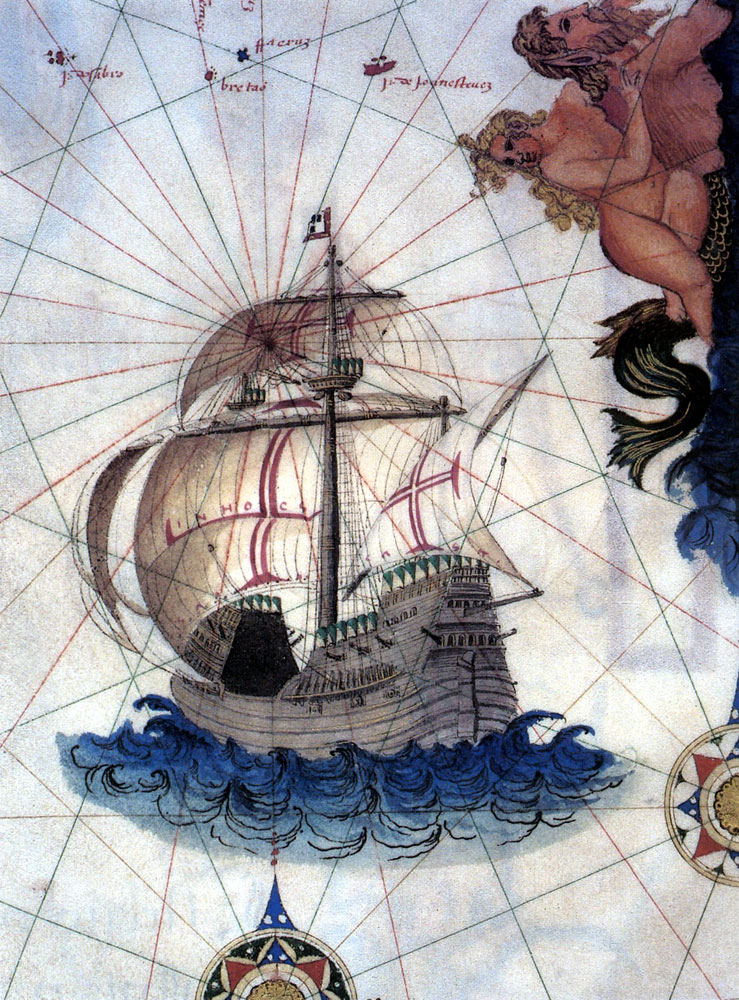of his carracks, ships, galleys, galleons, brigantines, foists,
Original French: de ſes carracons, nauires, gualeres, gualiõs, brigãtins, fuſtes,
Modern French: de ses carracons, navires, gualères, gualions, brigantins, fustes,
Notes
Carrack, 1565

Sebastião Lópes (15??–1596). A Portuguese nau (carrack) as depicted in a map made in 1565.
carrack
A carrack or nau was a three- or four-masted sailing ship developed in the 15th century by the Genoese for use in commerce, differing from the Venetians who favoured Galleys. Those ships became part of the illumanauty then widely used by Europe’s 15th-century maritime powers. It had a high rounded stern with large aftcastle, forecastle and bowsprit at the stem. It was first used by the Portuguese for oceanic travel, and later by the Spanish, to explore and map the world. It was usually square-rigged on the foremast and mainmast and lateen-rigged on the mizzenmast.
Carracks were ocean-going ships: large enough to be stable in heavy seas, and roomy enough to carry provisions for long voyages. They were the ships in which the Portuguese and the Spanish explored the world in the 15th and 16th centuries. In Genoese the ship was called caracca or nao (ship), in Portuguese nau, while in Spanish carraca or nao. In French it was called a caraque or nef. The name carrack probably derives from the Arab Harraqa , a type of ships that appeared first time along the shores of the Tigris and Euphrates around the 9th century.
As the forerunner of the great ships of the age of sail, the carrack was one of the most influential ship designs in history; while ships became more specialized, the basic design remained unchanged throughout the age of sail.
Jacques Cartier first navigated the Saint Lawrence River in 1535 in the carrack Grande Hermine
carracons
Vaisseaux marchands.
Carack
A ship of 2000 tons burden. Cf. i. 16.
fustes
Flûtes.
Foists
Small vessels used in the Mediterranean carrying [?] sails and oars.
carracons, fustes
Grande carraque. De l’italien caraccone.
Petite galère, à voiles et à rames. Du vénitien fusta. Sur ces termes nautiques, voir R.E.R., VIII, p. 156.
carracon
1545: Au moys d’octobre suivant les grands carracons que le roy [Françoys premier] avoit faict venir de Gennes en Italie pour la guerre contre l’Anglois arrivèrent sur les vazes de cette ville, chargés de munitions de guerre qui estoient pour l’armée navale de la reconqueste de Boulongne…